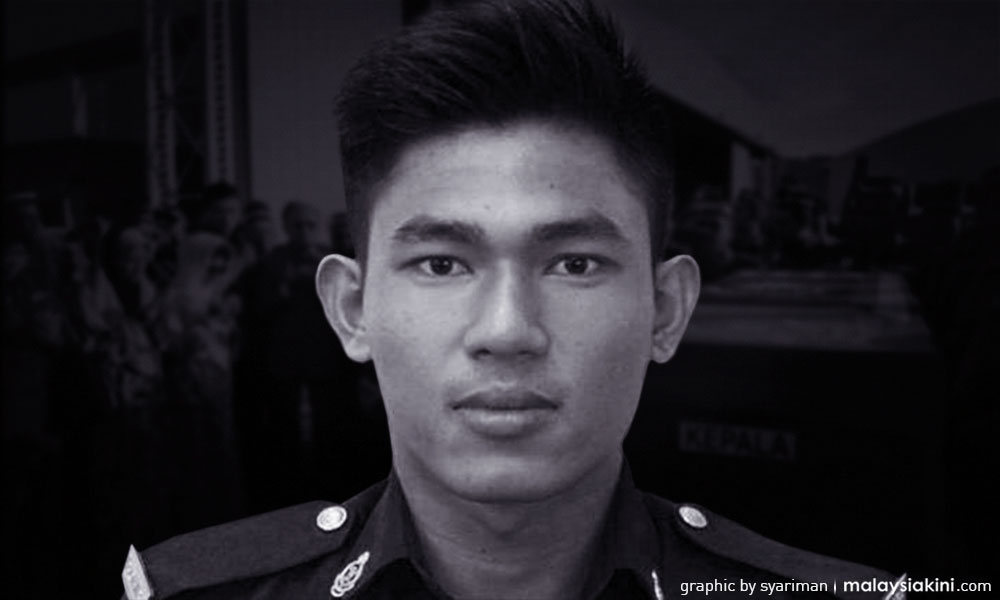
After 41 days, 30 witnesses and 137 exhibits, the inquest into the circumstances that led to the death of fireman Muhammad Adib Mohd Kassim concluded last week.
The coroner, Rofiah Mohamad found that “more than two unidentified persons” had caused the injuries that led to the death of Muhammad Adib.
At the time of the incident last year, we knew that Muhammad Adib died as a result of the injuries that he sustained during the riots surrounding the issue of the Seafield Sri Maha Mariamman Temple. Yet the circumstances that led to his fatal injuries remained a mystery. The prevailing narrative at that time was that Adib was beaten by the rioters.
In December 2018, Attorney-General Tommy Thomas exercised his powers under the Criminal Procedure Code to direct the Coroner’s Court to hold an inquest to determine the cause of death of Muhammad Adib.
Many at that time were cynical about the decision to hold the inquest. They claimed that the inquest was an attempt to ‘cover-up’ the cause of Muhammad Adib’s death. To them, it was already clear as to what supposedly happened that fateful night.
The inquest started earlier this year and the proceedings were covered extensively by the media. Yet even while the proceedings were afoot, many still questioned the need for the inquest.

In May this year, opposition parties Umno and PAS held a joint press conference in which they claimed that the attorney-general had tried to ‘interfere’ with the proceedings when the lawyer acting for the Ministry of Housing and Local Government, Syazlin Mansor (above), recused herself.
At that time, PAS secretary-general Takiyuddin Hassan questioned whether the attorney-general did not have faith in the police investigations by directing the inquest to be held. Meanwhile, at the same press conference, Umno vice-president Ismail Sabri Yaakob called for the establishment of a Royal Commission of Inquiry to be held, to replace the inquest.
Such statements were clearly intended to undermine the inquest and to maintain the narrative that the government was trying to ‘hide’ the truth by way of the inquest.
Ultimately, the attorney-general’s decision for an inquest to be held was the right one. It allowed for witnesses to be called, evidence to be put forth, theories to be tested and findings to be made by a court of law in an open and transparent manner.
Nothing was concealed, no evidence was suppressed. No stone was left unturned. All the while proceedings were conducted in open court. The inquest shed light onto what happened on the night of the riots.
The claims that the government had attempted to cover up, or that the attorney-general had interfered with the inquest, were baseless. The recusal of Syazlin Mansor had no bearing on the integrity of the evidence that was presented during the inquest.
Now, the very same people who undermined the proceedings by questioning the need for the inquest, are hailing the coroner’s findings. Now, there is no longer talk of a need for a Royal Commission of Inquiry, nor claims that the inquest was merely an attempt to conceal the truth.
I have not read the grounds of judgment by the coroner, so I cannot comment on whether it was the correct decision. Yet, what is clear is that the authorities must now act upon those findings, and the police will need to review their investigations on the riots and the death of Muhammad Adib.
Muhammad Adib died as a hero, performing his duties as a fireman. If indeed there are those who caused the injuries that led to his death, then the perpetrators must be brought to justice.
We lost a young man in service to his nation. His death was a tragedy, made worse by how some quarters have capitalised on it for their narrow communal or political interests.
SYAHREDZAN JOHAN is a civil liberties lawyer and political secretary to Iskandar Puteri MP Lim Kit Siang. - Mkini



No comments:
Post a Comment
Note: Only a member of this blog may post a comment.